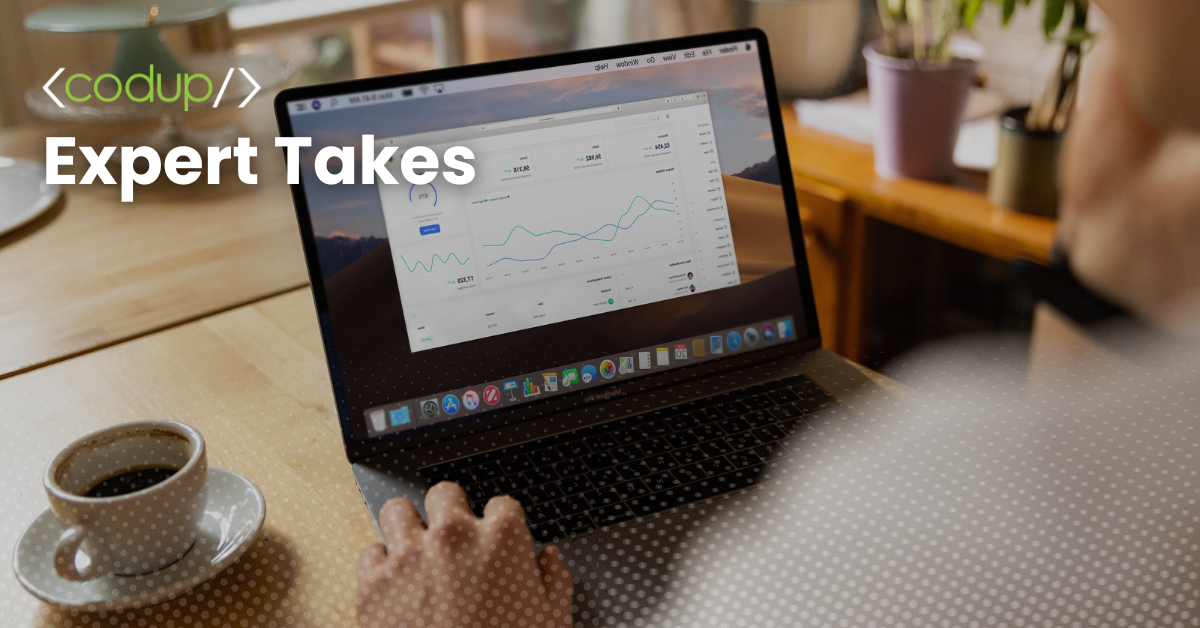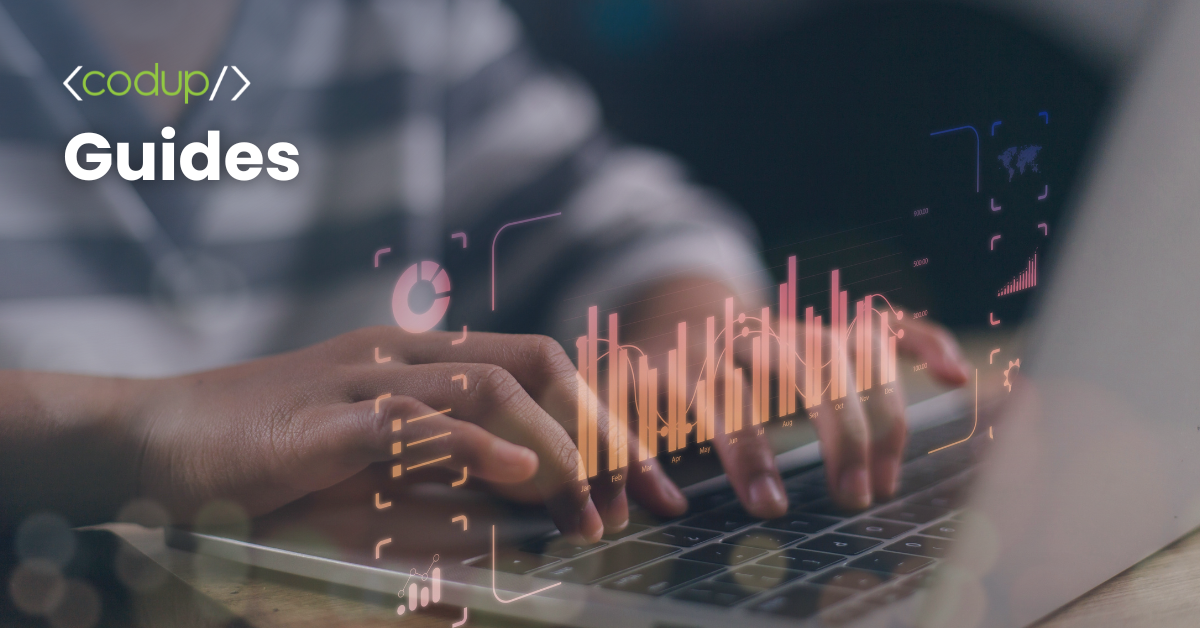Inside the B2B Buyer’s Journey: How to Map an 18-Month Path from “Just Browsing” to “Let’s Sign the Contract”
Let’s be honest: if B2B buying were a relationship status, it would be “it’s complicated”… with a side of therapy and a 76-slide PowerPoint.
While B2C customers swipe their credit cards faster than you can say “flash sale,” B2B buyers are out here assembling buying committees, cross-checking technical documentation, and ghosting vendors for months while “looping in finance.”
Yes, welcome to the world of B2B: where every purchase is a group project, and the only thing longer than the buying cycle is the email thread titled
“RE:RE:RE: Final version v3_final_FOR_REAL_NOW.pptx.”
At Codup, we’ve seen it all. The analysis paralysis. The endless RFPs. The stakeholder tug-of-war. And because we’ve walked alongside B2B clients across 23+ countries through these epic 18-month sagas, we’ve developed a playbook not just for surviving the B2B buyer’s journey but turning it into a digital experience that works.
Let’s unpack the chaos, shall we?
The B2B Buying Cycle: Less Funnel, More Game of Thrones

Forget the simple “awareness → consideration → decision” funnel. B2B buying looks more like this:
- Awareness
- Consideration
- Back to awareness because finance had concerns
- A new stakeholder joins, starting the journey over
- Legal slows it down
- Decision made
- Oh, wait, new CIO, start over
Every stage is filled with micro-decisions, competing priorities, and surprise plot twists… things like the budget getting pulled because someone finally notices the company is still paying for fax machines.
So, how do you build digital experiences that support this chaos? That’s where journey mapping comes in, and no, not the “draw it on a whiteboard and forget it exists” kind. We’re talking about real, operational journeys that guide buyers through the entire process.
Phase 1: The “Something Is Broken” Stage (Months 0–3)
This is the beginning of your buyer’s quest. Someone notices a problem (finally).. inventory mismatches, order errors, or maybe their current software crashes every time someone tries to log in from a different browser.
What they need here isn’t a hard sell. It’s education. Helpful content. Tools to understand their pain.
What works:
- Blog posts on industry challenges
- ROI calculators
- Explainer videos (bonus points if animated stick figures are involved)
Here’s Codup’s experience and our shameless plug (but at least it’s informational). At Codup, we’ve built interactive tools and calculators for B2B clients that enable prospects to quantify their pain before booking a demo. Like that one time we helped a distributor calculate losses from manual order errors, and it made their COO cry (in a good way).
Phase 2: The “Let’s Talk to Vendors” Phase (Months 3–6)
Also known as: “That one guy from procurement just joined the call, and he’s asking questions no one can answer.”
At this point, your buyer knows the pain is real. Now they’re exploring vendors, attending demos, and probably building an Excel comparison sheet with too many colors and not enough logic.
This is where you build trust… not with buzzwords, but with proof.
What works:
- Case studies and success stories
- Product comparison guides
- Webinars with real customers (not just your VP Sales doing jazz hands)
We’ve helped clients integrate live demo sandboxes directly into their B2B portals, allowing prospects to try before they buy, eliminating the need for six follow-up calls. And because we’re also product dev experts, we help you build just enough to impress without blowing the budget on features nobody uses. Granted, we don’t stand at the curb providing this to every Tom, Dick, and Harry but we have done it. I promise. *Pinky rises*
Phase 3: The “Is This Thing Going to Integrate With Our 43 Legacy Systems?” Phase (Months 6–12)
Also known as: “We’d love to move forward… but IT has questions. Lots of questions.”
Now you’re dealing with the technical folks. They want documentation, integration blueprints, API specs, uptime guarantees, and a blood oath that your software won’t crash during Black Friday.
What works:
- API documentation
- Security whitepapers
- Architecture diagrams (with at least one triangle)
With years of experience in systems integration, we help B2B platforms communicate with CRMs, ERPs, accounting tools, and even custom software built by the founder’s cousin in 2004. We bring harmony to data chaos (which is essentially what we’ve been doing since day one), without requiring you to rewrite your tech stack from scratch.
Phase 4: The “Finally, Let’s Buy This Thing” Phase (Months 12–18)
Also known as: “If legal doesn’t kill it, finance might.”
You’re this close to closing the deal. But before the ink dries, your buyer needs reassurance: Will this work? Can we trust you? What’s the post-sale plan?
What works:
- Transparent pricing
- Seamless digital contracts
- Onboarding plans that don’t feel like punishment
Mature project delivery processes kick in here. From UAT to deployment, we’ve done this so many times that it’s muscle memory. We help our clients look more trustworthy because their backend systems deliver smooth experiences from day one. Not to brag, but your onboarding might become the most exciting part of their quarter.
Don’t Ghost Them After the Contract: Post-Purchase Magic
Look, if your “customer experience” ends when the invoice is paid, you’re not running a B2B business. You’re simply selling one-night stands. *shakes head*
Long-term success means:
- Reordering made easy
- Self-service account portals
- Smart upsell and cross-sell journeys
- Proactive support
How do we not end up becoming money-hungry fiends, you ask? We’ve helped clients build reordering systems that anticipate customers’ needs before they even realize they’re running low. Think predictive reorder logic, bundled discounts, and beautifully designed dashboards that don’t require a PhD to use. Why? Because we stay around to ensure that it’s easy to use from your perspective.
We also build centralized account portals where your B2B clients can handle quotes, invoices, support tickets, integrations, and reorders all in one place. It’s like Amazon, but tailored for forklifts, fabrics, or freight services.
Personalization But Make It Scalable (and Not Creepy)
Let’s not forget that B2B buyers want personalization too. But not the “Hi <FIRST_NAME>” kind. They want relevance. Context. Solutions tailored to their role, industry, and business size.
Here’s what to personalize:
- Industry-specific content
- Pricing tiers by account
- Custom dashboards for different personas
Combining eCommerce platform expertise with smart integrations into your CRM and product catalogs. That means your customer from the steel industry doesn’t get hit with the same sales pitch as someone selling organic dog treats. Different users, different data, different journeys, all running on a unified system. Yes, it’s magic. And yes, we do it.
So, what’s the Playbook?
Let’s sum it up like a tired B2B buyer who just survived their 9th demo:
- Map your journey across 12–18 months
Include every stakeholder, every twist, every delay. - Create content for every phase.
Not just top-of-funnel blog posts. Think.. ROI decks, onboarding guides, and demo environments. - Support post-sale like it’s pre-sale
Loyalty is earned after the deal closes. - Personalize, but don’t over-engineer
Tailored experiences can be scalable, with the right systems. - Collaborate with partners who understand the complexities of B2B.
(Hi, we’re Codup.)

Long Journeys Need Strong Guides
B2B isn’t fast. It’s not always fun. And it isn’t simple. However, if you treat your buyer’s journey as it is, you’ll earn trust, loyalty, and repeat revenue.
At Codup, we don’t just build websites. We build ecosystems that guide your prospects through every stage of the B2B buying cycle. From awareness to onboarding to reordering, we help you show up in the right way, every time.
Contributors
-

Fawaz Ali
writer
Director - Growth & Strategic Partnerships



